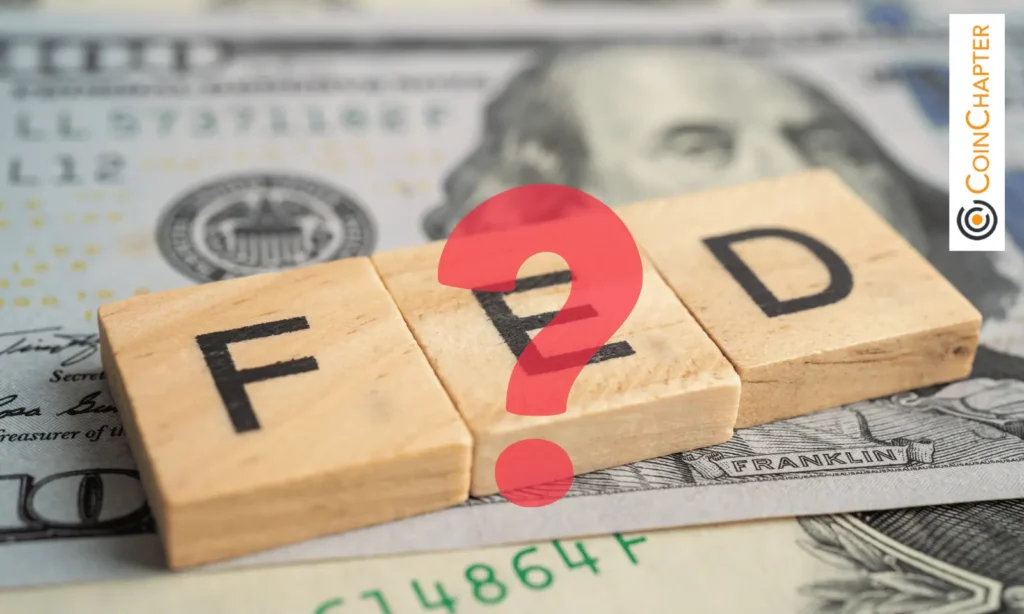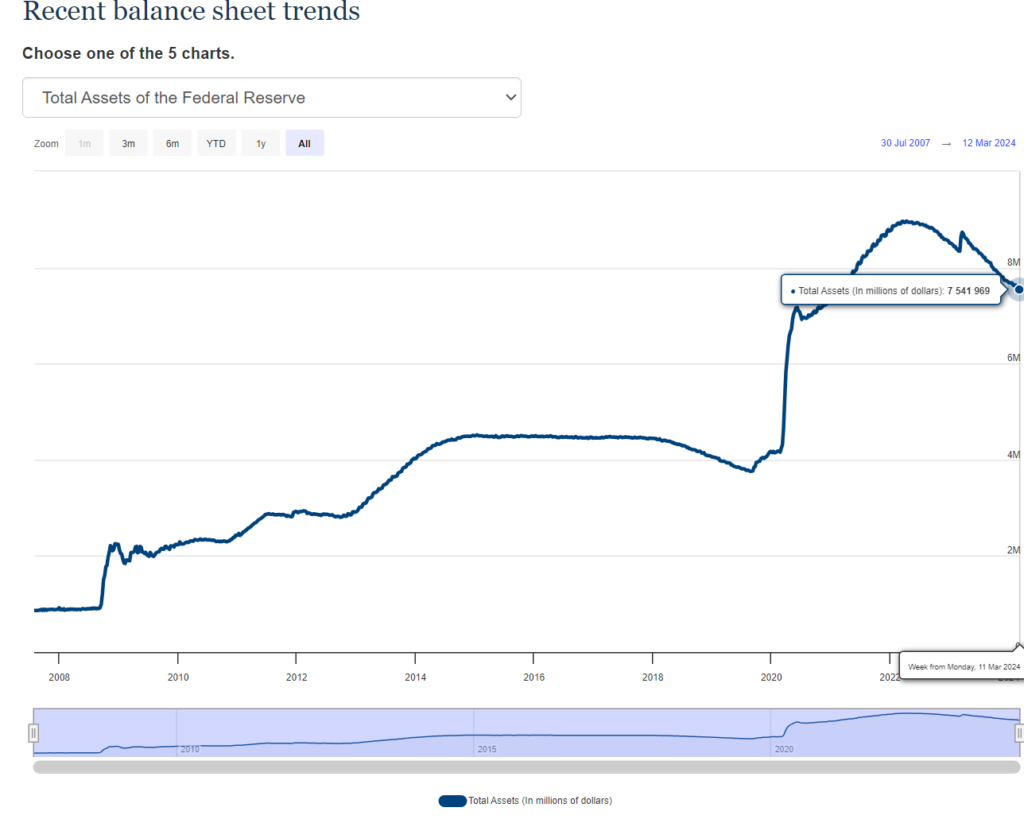
NAIROBI (Coinchapter.com) – The Federal Reserve is initiating discussions this week centered on its balance sheet strategy, including when to decelerate the drain of excess cash from the financial system. The key debate revolves around how much the policymakers can reduce the Fed’s $7.5 trillion asset portfolio before cracks begin to emerge – reminiscent of the 2019 funding squeeze.

The U.S. national debt stands at a staggering $34.54 trillion, the culmination of continual borrowing throughout the nation’s history.
Uncertain Timeline for Balance Sheet Reduction
Events such as the Afghanistan and Iraq Wars, the 2008 Great Recession, and the COVID-19 pandemic sparked significant spikes in the national debt, intensifying fiscal pressures on the U.S. government. From fiscal year 2019 to fiscal year 2021, expenditures surged by about 50%, largely due to the economic fallout of the COVID-19 crisis. The Fed’s balance sheet expanded notably during the pandemic through quantitative easing programs, involving substantial asset purchases to infuse liquidity into the financial system and bolster economic activity.

However, with inflation concerns mounting, the Fed has shifted its stance towards tightening monetary policy. This policy shift includes raising interest rates and reducing its asset holdings. The pace and extent of this reduction are yet to be determined, and the discussions this week are likely provide more clarity on the Fed’s plans.
Banks May Hold the Key
Financial analyst Joseph Brown, in a post on X, proposed a potential solution centered on altering leverage rules for banks. Present regulations impose constraints on the quantity of assets, including U.S. treasuries, that banks can possess. Brown suggests that exempting treasuries from these limitations could grant banks limitless ability to acquire government debt, effectively furnishing the government with an extensive and inexhaustible source of funding.
The Fed has signaled its openness to such regulatory changes, which could allow it to indirectly support government borrowing without directly expanding its own balance sheet. However, this strategy is not without risks. It could further entangle the banking system with government debt, raising questions about financial stability and long-term economic consequences.
The Fed’s balance sheet discussions this week will have far-reaching implications for the U.S. economy. Policymakers must delicately address mounting national debt while fighting inflation and safeguarding financial stability. The decisions made will shape the economic landscape for years to come.


